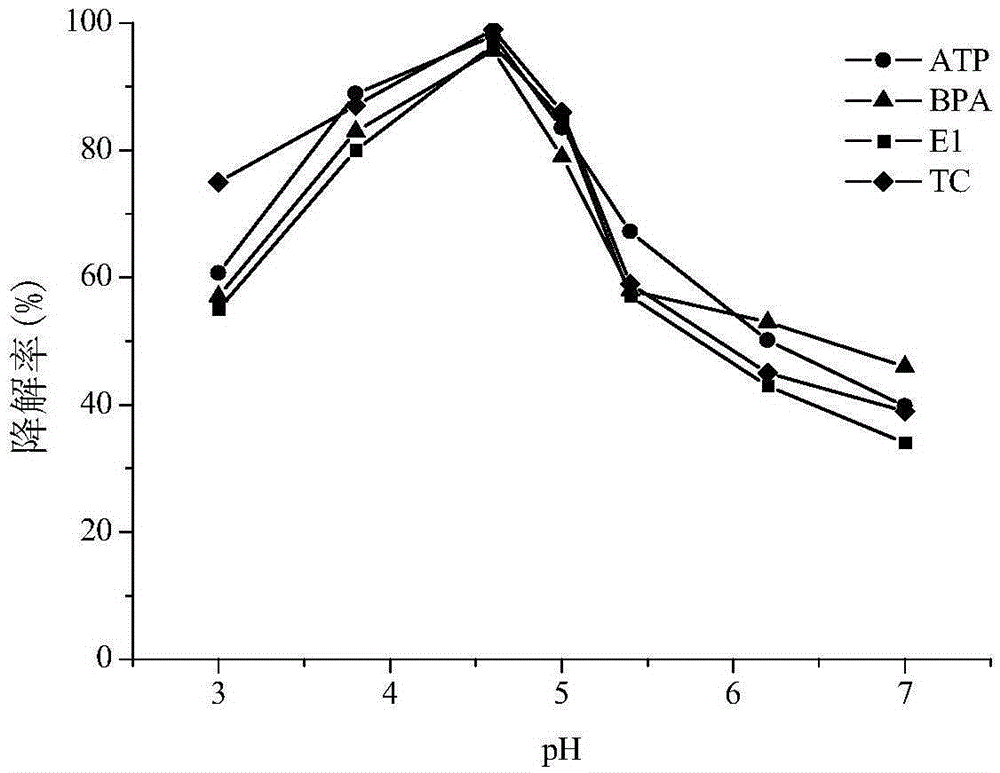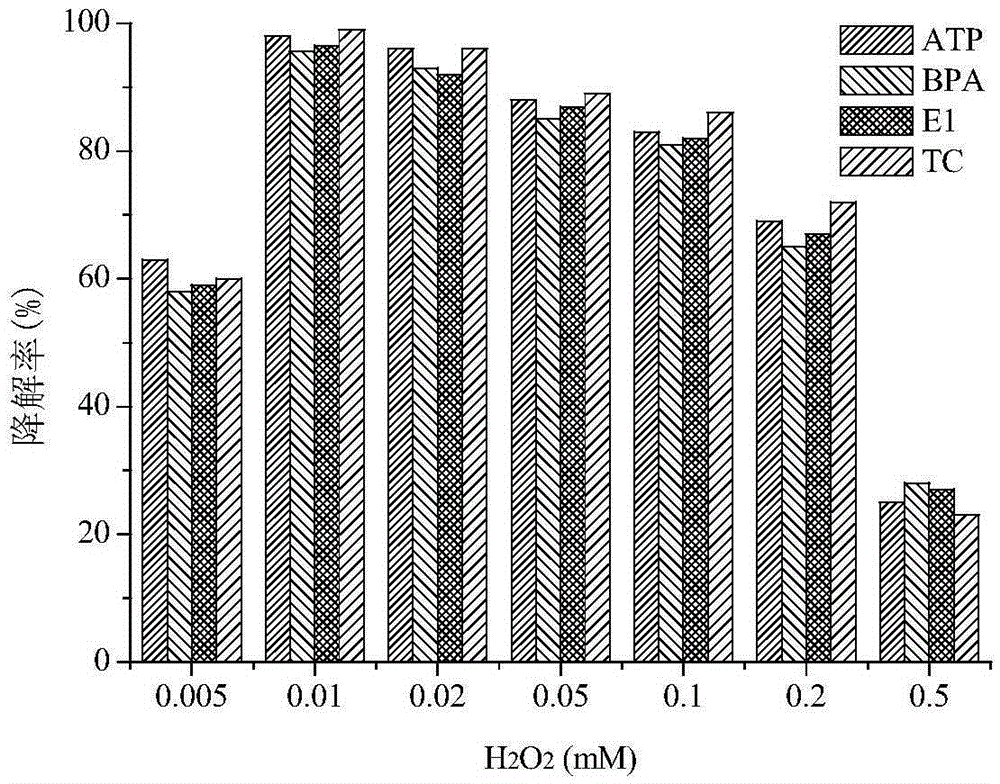A kind of lignin peroxidase preparation removes the method for drug and personal care category pollutant
A peroxidase and personal care technology, applied in the field of biological treatment of pollutants, can solve the problems of low concentration of PPCPs, and achieve the effect of efficient degradation and high efficiency
- Summary
- Abstract
- Description
- Claims
- Application Information
AI Technical Summary
Problems solved by technology
Method used
Image
Examples
Embodiment 1
[0041] Table 1 shows the water quality parameters of the actual sewage collected in this example. The concentration of the four PPCPs selected in the reaction system is 0.01mM, the activity of the added LiP is 0.0065U / mL, and the concentration of H 2 o 2 The concentration is 0.01mM, the VA concentration is 1.0mM, and the pH of the reaction system is adjusted to 3.0, 3.7, 4.6, 5.0, 5.3, 6.2, 7.0 with phosphoric acid-citrate buffer solution, and the temperature is controlled at 25°C and shaken at constant temperature After reacting for 90 minutes at a speed of 150 rpm in the incubator, the residual amount of pollutants was detected. The result obtained is as figure 1 Shown: the reaction has a higher degradation rate between pH 3 and 5.5, and the degradation efficiency of the four PPCPs is the largest at 99% (degradation rate > 96%) when the pH is 4.6.
[0042] Table 1 The property parameters of the filtered sewage treatment plant effluent
[0043] compound
[0044]...
Embodiment 2
[0046] The four PPCPs selected in the reaction system represent pollutant concentrations of 0.01mM, the LiP activity added to the reaction system is 0.0065U / mL, the pH of the reaction system is adjusted to 4.6 with phosphoric acid-citrate buffer, and veratrol ( VA) concentration was 1.0mM, and different amounts of hydrogen peroxide were added to adjust the concentration of hydrogen peroxide in the reaction system to be 0.005mM, 0.01mM, 0.02mM, 0.05mM, 0.1mM, 0.2mM, 0.5mM, respectively, and The temperature was controlled at 25° C., and the residual amount of pollutants was detected after reacting for 90 minutes at a speed of 150 rpm in a constant temperature shaking incubator. The result obtained is as figure 2 Shown: H 2 o 2 When the concentration of LiP is 0.01mM, the catalytic degradation rate of LiP to 4 kinds of pollutants is greater than 90%, if H 2 o 2 When the concentration increases by 10 times (0.10mM), the removal rate of pollution is obviously reduced (less tha...
Embodiment 3
[0048] The four PPCPs selected in the reaction system represent pollutant concentrations of 0.01mM, the LiP activity added to the reaction system is 0.0065U / mL, and the pH of the reaction system is adjusted to 4.6 with phosphoric acid-citrate buffer, H 2 o 2 The concentration of VA was 0.01mM, and different amounts of veratrol were added to the sewage to adjust the VA concentration of the reaction system to 0.5mM, 1mM, 2mM, 3mM, 4mM, 5mM, and the temperature was controlled at 25°C. After reacting for 90 minutes at a rotating speed of 150 rpm in a shaking incubator, the residual amount of pollutants was detected. Investigate the results of different VA concentrations such as image 3 As shown: the VA concentration of about 1mM can maintain high enzyme activity and stability. At this time, the degradation rate of LiP enzyme to the four PPCPs reaches 90%. If the concentration of VA continues to increase, the VA and pollutants will Competing for enzyme binding sites, resulting i...
PUM
 Login to View More
Login to View More Abstract
Description
Claims
Application Information
 Login to View More
Login to View More - R&D
- Intellectual Property
- Life Sciences
- Materials
- Tech Scout
- Unparalleled Data Quality
- Higher Quality Content
- 60% Fewer Hallucinations
Browse by: Latest US Patents, China's latest patents, Technical Efficacy Thesaurus, Application Domain, Technology Topic, Popular Technical Reports.
© 2025 PatSnap. All rights reserved.Legal|Privacy policy|Modern Slavery Act Transparency Statement|Sitemap|About US| Contact US: help@patsnap.com



